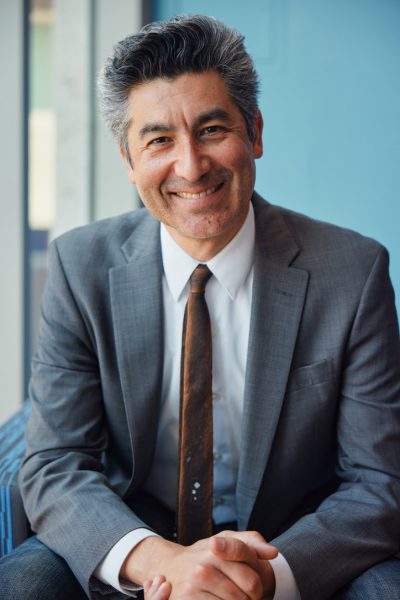
Stevenson Professor of Physics and Astronomy (Vanderbilt University)
When a Mexican immigrant mother with bold dreams for her only child gave him the name Keivan, meaning “universe” or “Saturn” in several ancient languages, she had no inkling he was to become a celebrated astrophysicist with achievements reaching far beyond his field that would earn him a prestigious MacArthur Foundation “genius” grant.
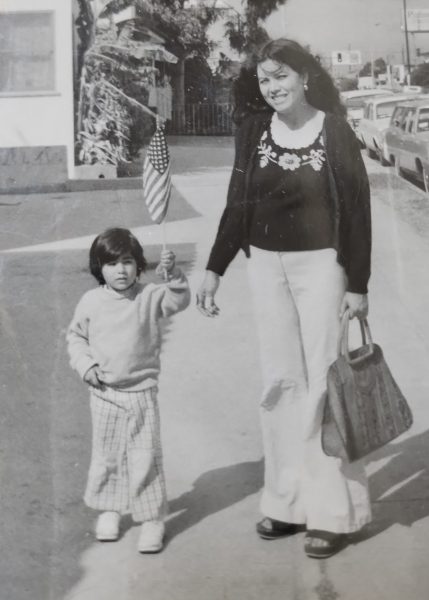
What she did know was that she was planting the seeds of a brilliant and compassionate mind. Luisa raised Keivan Stassun, Stevenson Professor in physics and astronomy, with a determined work ethic, a joy for learning and imagination, and a heart built on the foundation of raising others up. And that’s exactly what he’s doing.
“One of my very first memories was being with my mom when she became an American citizen. I remember how proud she was. I was infused by her dreams, by her imperative to achieve. There was also an expectation and a sense of obligation to make the path for those coming after me a little bit easier,” Stassun said.
SHOOT FOR THE STARS
Stassun grew up in a working-class southern California town, and he had aspirations of being an astronaut. Like many gifted young people, he was inspired by a variety of mediums: He filled his growing creative mind with writing, photography, music, drama, varsity volleyball and more.
Though he ultimately decided to keep his feet planted on Earth, astronomy fueled his passion. He studied astronomy and physics at University of California–Berkeley, then went on to the University of Wisconsin to complete his graduate and doctoral studies.
That led to exciting opportunities for Stassun as a postdoctoral fellow with the NASA Hubble Fellowship program, where he pursued his research in stars and exoplanets.
“By the time I earned my Ph.D., I knew that I wanted to be involved in frontline astrophysics research forever, and I wanted to inspire the next generation of discoverers,” he said.
With a trifecta of academic degrees under his belt, it still took his mom’s inspiration to propel Stassun to take risks that would ultimately lead to the work he’s doing today.
“I think I spent a lot of my time as a high schooler, as an undergraduate and even as a graduate student doubting my inner voice or the inner impulse to see something uniquely and act on it,” he said. “For a long time, I just pushed those ideas or those impulses down because I figured if it was the right thing to do, somebody surely would have done it already, you know? Then I realized that inner impulse is what creativity is! That’s how new things happen.”
BE THE BRIDGE
Stassun listened to that inner voice that kept encouraging him to widen paths for others.
At Wisconsin, he helped design and launch the “K-Through-Infinity Professional Development Partnership,” connecting graduate students in the sciences with K-12 teachers and inspiring students into science, technology, engineering and mathematics.
He was drawn to Vanderbilt in 2003, partially because of the university’s enthusiasm around something that had been tugging on his heart for years—the need to support underrepresented minorities, like himself, interested in advanced STEM research.

Within Stassun’s first year at Vanderbilt, he and other professors, including physicist Arnold Burger from Fisk University, a historically Black college in Nashville, launched the Fisk-Vanderbilt Master’s-to-Ph.D. Bridge Program, which is designed to mentor and support underrepresented minority students working toward advanced degrees in astronomy, biology, chemistry, materials science and physics.
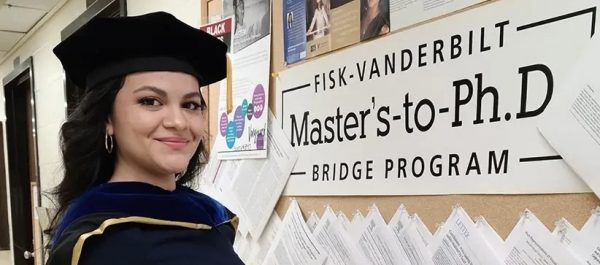
“That’s part of what makes Vanderbilt so special, when you have the right idea at the right time, talented people in our community really step up,” he said.
REIMAGINING HUMAN POTENTIAL
Stassun’s move to Nashville also opened a chapter of his life that continues to ground him and inspire him beyond measure: He became a father.
And when Stassun and his wife, Justine, learned that one of their sons was on the autism spectrum, with unique intellectual gifts that are not always understood by mainstream academia or businesses, Stassun channeled his problem-solving creativity toward that marginalized group.
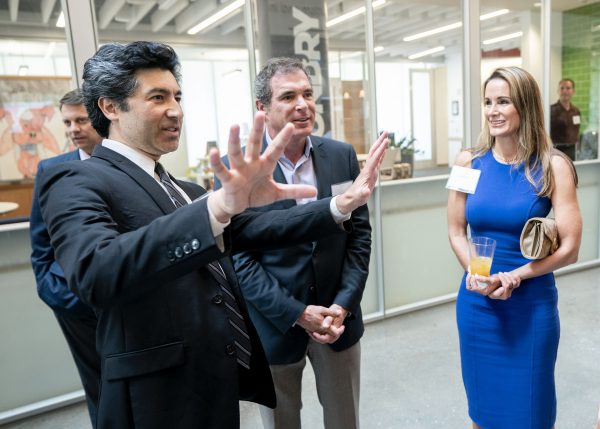
In 2017, he spearheaded the creation of the Frist Center for Autism and Innovation. This center puts neurodivergent students at the heart of a network of support with researchers, inventors, advocates, businesses and others to facilitate meaningful careers.
“With many other parts of our society and culture, we discard human potential. We leave it on the cutting room floor. And if only that potential was looked at in a slightly different way to see what was really there—that with just a little bit of recognition and nurturing and mentoring and support could be fully realized,” Stassun said.
He quickly found a passionate group of experts and supporters across Vanderbilt and beyond to take the center to new heights. Stassun radiates with enthusiasm as he recounts the center’s recent accomplishments:
- Operating the College Autism Network, a network of 100+ colleges and universities that offer support programs for autistic and other neurodiverse students
- A graduate certificate program in Neurodiversity Inspired Science & Engineering, which has now awarded more Ph.D.’s to autistic scientists and engineers than any other program
- A neurodiversity employment database
- Supporting partnering labs in developing technologies to support independence and employment for autistic adults
- Developing training materials for businesses around neuro-inclusion in the workplace in partnership with the Vanderbilt Owen Graduate School of Management
EYES ON STUDENTS AND THE STARS
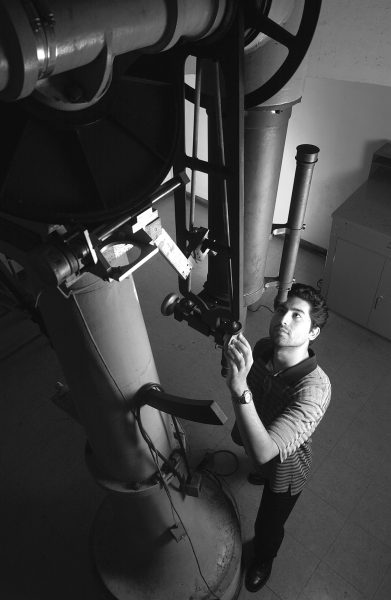
With several impactful programs in motion, Stassun is also deeply involved in research and teaching star evolution and exoplanet discovery. He leads the Vanderbilt Initiative in Data-Intensive Astrophysics. He was appointed by President Joe Biden to the National Science Board to advise on federal policies tied to research and education in science and engineering.
He also contributed to a seminal road map for U.S. research in outer space through the Decadal Survey on Astronomy and Astrophysics 2020 (Astro2020), which forecasts research pathways and makes recommendations for the nation’s multibillion-dollar investments for the future of astronomy and astrophysics research.
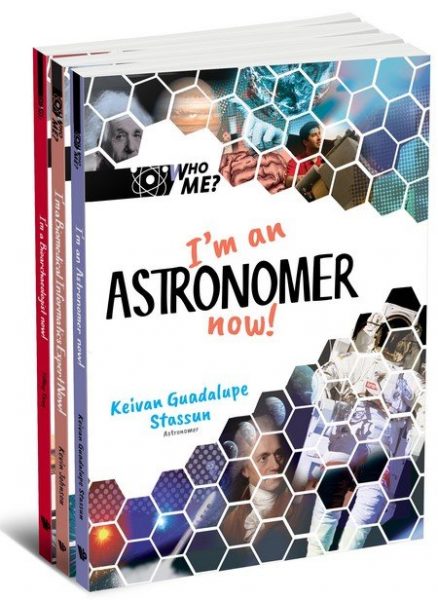
While working with master’s and Ph.D. students, he has also taught an undergraduate introduction to astronomy class over the past several semesters, where he’s known to blast some of his favorite Gen X music to grab students’ attention.
He also worked on a biography book series for children, partnering with fellow professor David Weintraub and undergraduates in the communication of science and technology program. Stassun’s book is Who Me? I’m an Astronomer Now!
“My hope is that there will be young readers out there who can read this story and see something of themselves in it, because science is for everyone,” Stassun said.
SUPPORTING DREAMS
Stassun said he is honored and humbled by the MacArthur Fellowship, which provides an “$800,000, no-strings-attached award to extraordinarily talented and creative individuals as an investment in their potential.”
“I really believe in the idea of betting on people. I think that’s another throughline in my work. Yes, it’s building programs. Yes, it’s creating capacity and infrastructure and models, which is necessary for scaling and sustainability. But at the end of the day, it’s about making a bet on one person at a time,” Stassun said. “And the MacArthur award feels like somebody is making a bet on me.”
MORE MACARTHUR ‘GENIUS GRANT’ RECIPIENTS AT VANDERBILT
Three Vanderbilt faculty members have previously received MacArthur fellowships:
- María Magdalena Campos-Pons, Cornelius Vanderbilt Professor of Art, received her award in 2023 for her artistic work exploring histories across the Caribbean.
- Ken Catania, Stevenson Professor of Biological Sciences, was awarded the prize in 2006 for his work researching the central nervous systems of unusual animals, like star-nosed moles, to learn more about the mammalian brain.
- Jad Abumrad, Distinguished Research Professor of Communication of Science and Technology, received an award in 2011 for his work engaging listeners through his audio storytelling.
Watch more from Keivan Stassun talking about his MacArthur Foundation award.
By Amy Wolf
LEARN MORE
- Read more about Stassun and the MacArthur Fellowship and watch a video from the foundation
- Follow the the Frist Center for Autism and Innovation
- See the latest from the Fisk-Vanderbilt bridge program
- Read about Stassun’s NASA study on increasing diversity and inclusion on space missions
- Watch a video from the Who Me? I’m an Astronomer Now! series, where Stassun talks directly to kids about his life and career













